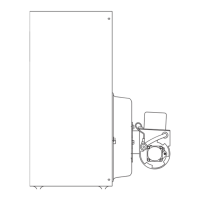14 Part Number 550-110-772/0816
OSB
Series 2 Oil-Fired Steam Boilers – Boiler Manual
7 Connect oil piping
General oil piping requirements
• Locationandinstallationofoiltanks,oilpipingandburners
must follow:
• NFPA31,latestedition-StandardfortheInstallationof
Oil-BurningEquipment.
• Localcodesandregulations.
• Informationprovidedwithburnerandfuelpump.
• Ifanypartoffueloiltankisabovelevelofburner,ananti-siphon
device installation is highly recommended to prevent flow of
oil in case of oil line break.
• Supportoillinesasrequiredbycodes.
• Maketankconnectionswithswingjointsorcoppertubingto
preventbreakingincasethetanksettles.Makeswingjoints
so they will tighten as tank settles. Non-hardening pipe joint
compounds should be used on all threads.
DonotuseTeontapeasanoilpipesealant.Itcan
causevalvestofail,creatinghazards.Donotuse
compression fittings, only flare fittings. Failure to
comply could result in severe personal injury, death
or substantial property damage from oil leakage
and/orrehazard.
• Undergroundpipemustberuninacasingtopreventoilleaking
into ground or under floor. Check local codes for information.
Oil piping connection at burner
• SeeFigure 13 fortypical oilconnectionatburner, allowing
burner mounting door to swing open completely for servicing.
• Connectoillinetoburnerusingaretting(Figure13).
• Seelocalcodesforappropriatearrangementandpiping of
filter, control valves, etc. connecting to oil tank.
• Refertoburnermanualforoilsystemrequirements.Verifythat
suctionliftdoesnotexceedstatedlimit.Whereliftexceeds
limit for a one-pipe system, use a two-pipe system as directed
in burner manual.
Figure 13 Oil piping connection to burner, typical

